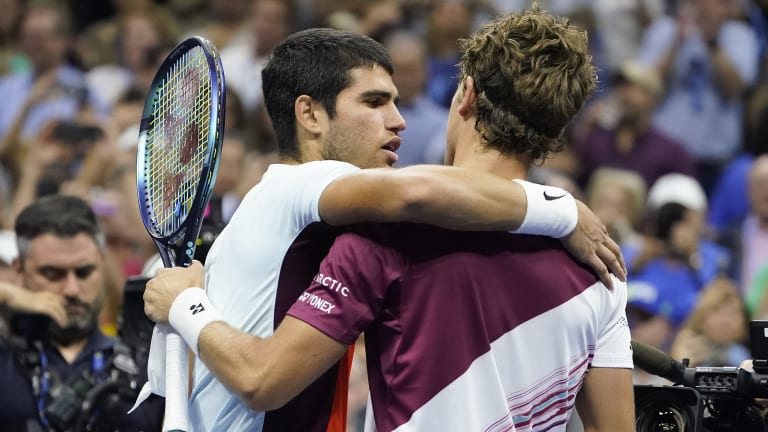Instruction
What can be applied from Carlos Alcaraz, Casper Ruud to your game? How to enjoy the competitive process
By Sep 12, 2022Instruction
Court of Appeals: Water Break
By May 20, 2023Instruction
Toni Nadal: With improved backhand, Casper Ruud "can be No. 1"
By Nov 21, 2022Instruction
Quick Tip: Add a rocking motion to the start of your serve
By Nov 16, 2022Instruction
Tennis Channel Academy: Rectifying Road Rage
By Oct 13, 2022Instruction
Tennis Channel Academy: Is the Lesson Model Broken?
By Oct 12, 2022Instruction
Breaking The Rules: Time to abandon the net touch?
By Oct 11, 2022Instruction
Mission Transition: How to bring your game from baseline to net (Part 3 of 3)
By Oct 03, 2022Instruction
Mission Transition: How to bring your game from baseline to net (Part 2 of 3)
By Oct 03, 2022Instruction
What recreational players can learn from Iga Swiatek, Ons Jabeur after US Open final
By Sep 10, 2022What can be applied from Carlos Alcaraz, Casper Ruud to your game? How to enjoy the competitive process
For all that world-class technique and composure, the world’s very best players are humans like the rest of us.
Published Sep 12, 2022
Advertising

Alcaraz became the youngest men's player to win a major since Rafael Nadal at 2005 Roland Garros.
© Associated Press